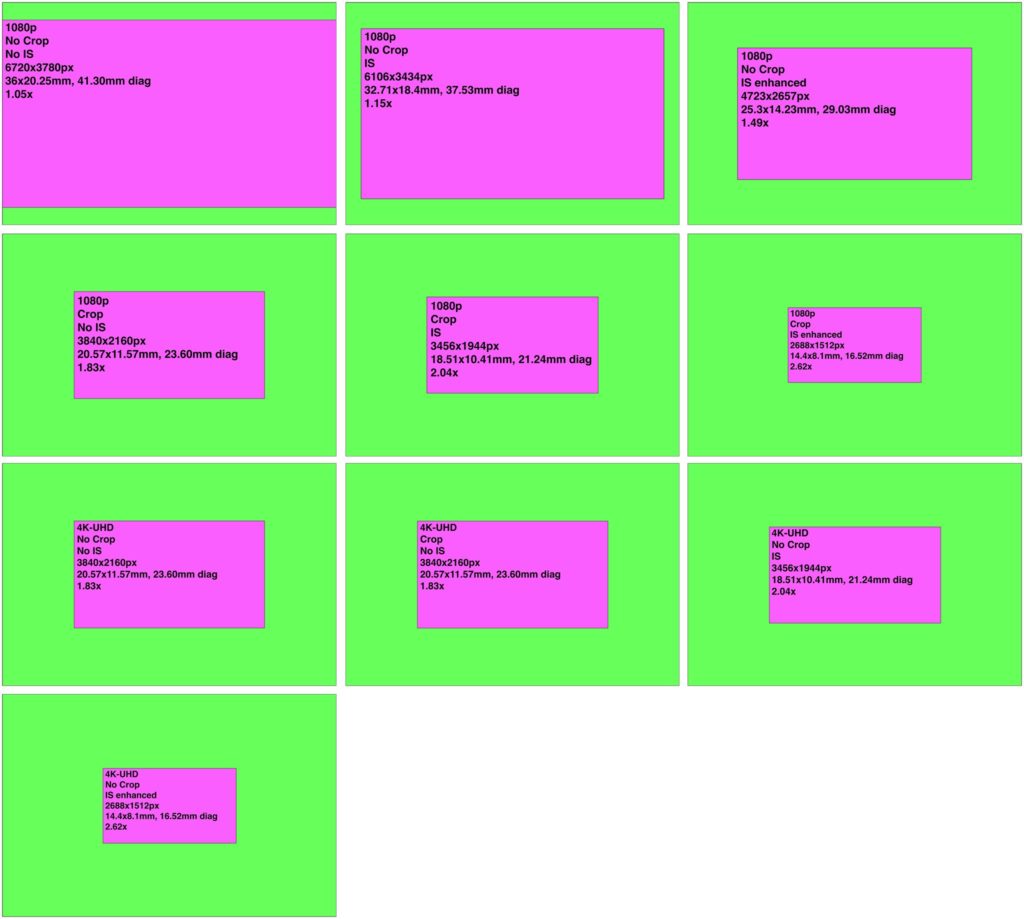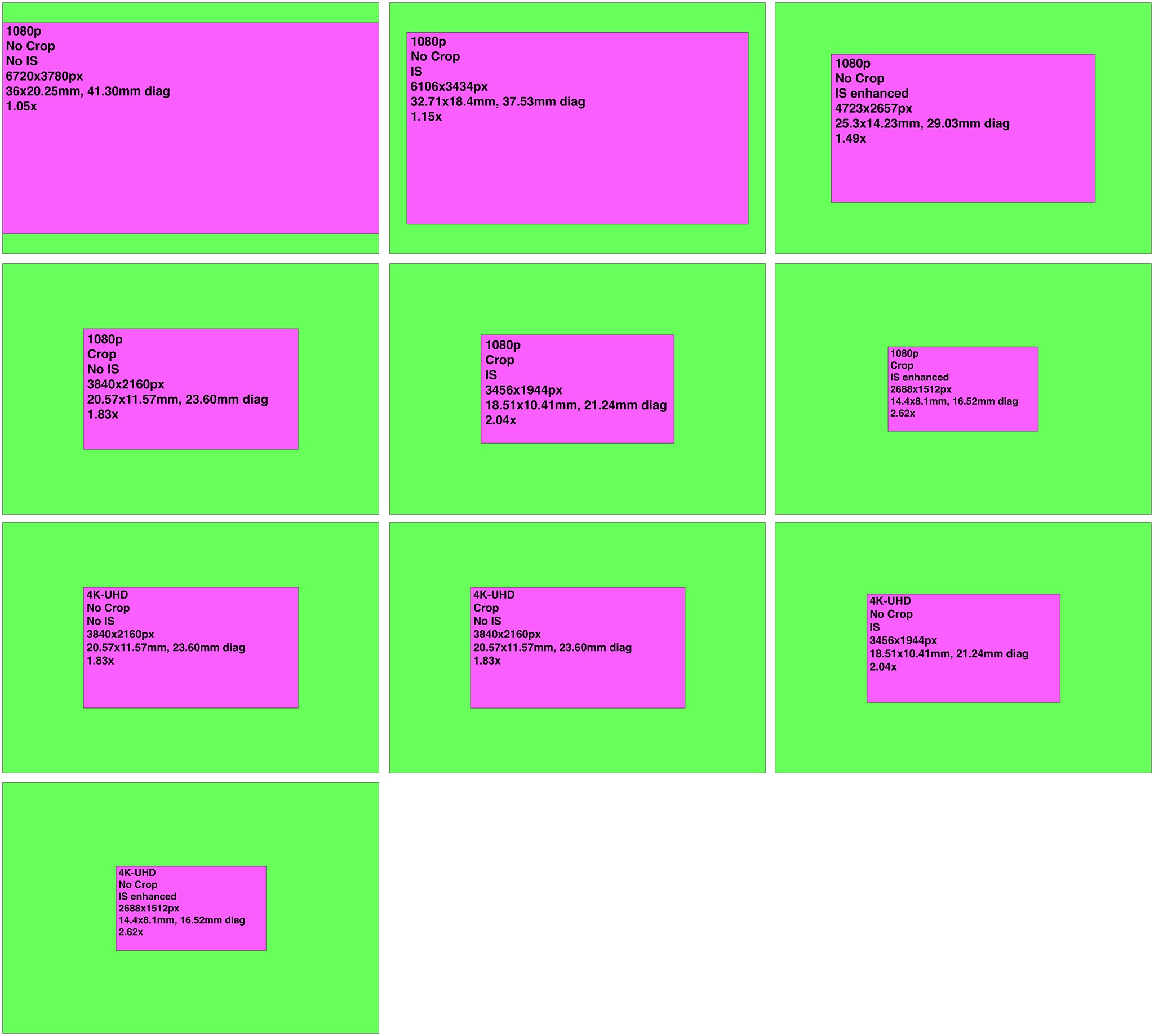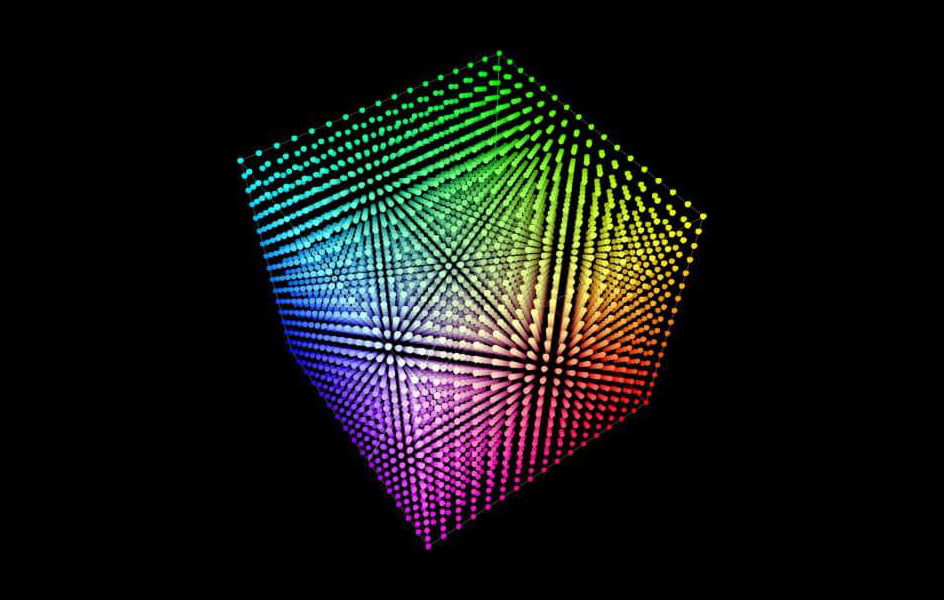Canon EOS R Crop Factors Part 2
Almost a year ago I wrote about this topic, but I forgot to include the extra crop you get while using IS and the image quality loss you’ll get while recording 1080p.
Most pixel-peepers hate soft images, and is kind of sad to realize that the Full HD video (1920x1080px) from the EOS R, even though uses the full width of the sensor, it resizes the image using a simple downsampling algorithm called pixel binning.
There are plenty of downscaling algorithms: nearest-neighbor interpolation, bilinear and bicubic, box, sinc and lanczos resampling, etc. The ones that render the best results requires more processing power which translates in heat, more power consumption and less battery life, here are the most common algorithms in order of processing intensity:
- Line skipping.
- Pixel binning.
- Downsampling.
Line skipping is almost self explanatory, it skips some between lines, is fast but produces poor results, then is pixel binning, which combines pixels from the bayer patter in order to make “bigger pixels”, and downsampling, which is the one that requires more processing power. Here is a great video explaining this concepts:
While recording 1080p using the full with of the sensor the Canon EOS R uses the pixel binning algorithm, that is why the result isn’t that sharp, if you want to have a sharper image while recording 1080p video, just switch to crop mode, but notice, you’ll get a 1.75x crop. This is because the video image is produced using the 4K-UDH sensor area and then the image gets downsampled to FHD 1080p.
Digital Image stabilization & Crop
Another issue with video is the crop factor while recording digital stabilized video, while some cameras have IBIS by using sensor bigger than the image circle and then moving it to compensate for vibrations, the EOS R uses a 36x24mm sensor fixed to the camera, and stabilized the video by using a small area of the sensor and moving it according to the vibration, this produces a crop factor that varies depending of the configuration, here is a table of this crop factors and settings:

In conclusion
If you are looking to get the sharpest result while recording FHD video, enable image cropping and do not enable digital IS at all, for 4K-UHD the “crop mode” doesn’t do a thing, but just in case, do not enable crop mode and do not use IS, that will get you the sharpest results.

Update: With the recent release of the Metabones Canon EF Lens to RF Mount T Speed Booster® ULTRA 0.71x you can get back almost the same full frame angle of view of your lenses, 1.2425x crop factor.
Update 2: Addressing @ppowersnick concerns about DFOV vs. HFOV (the first one is the most factual and accurate way to mesure circles of light, the second is to have a relative idea of the horizontal field of view), I updated the table of crop factors, to avoid misconceptions.
This is a copy of the original article wrote in Medium on Nov 29, 2019, it was moved here because Medium censors anyone who dares to question far-left policies.


